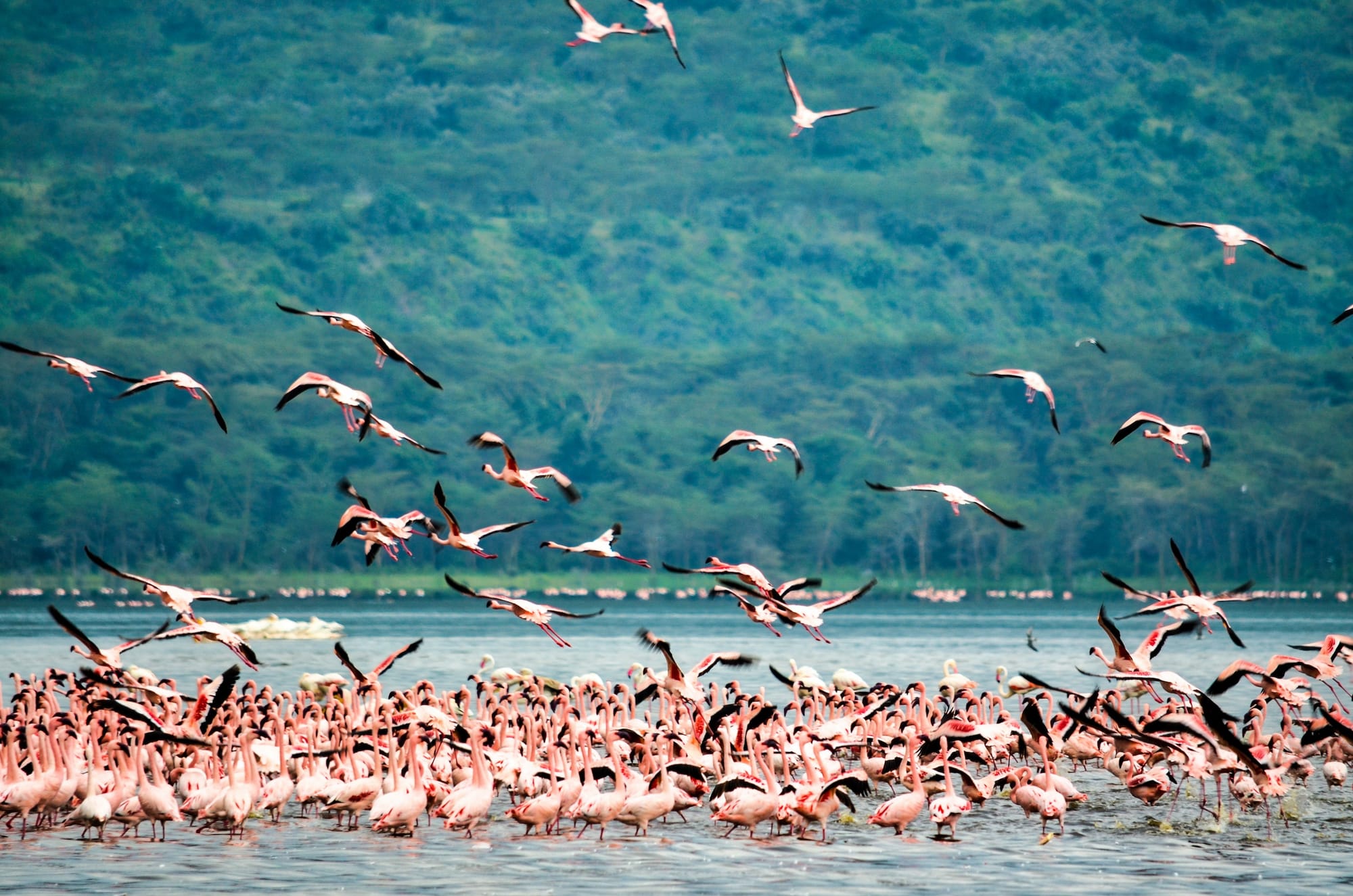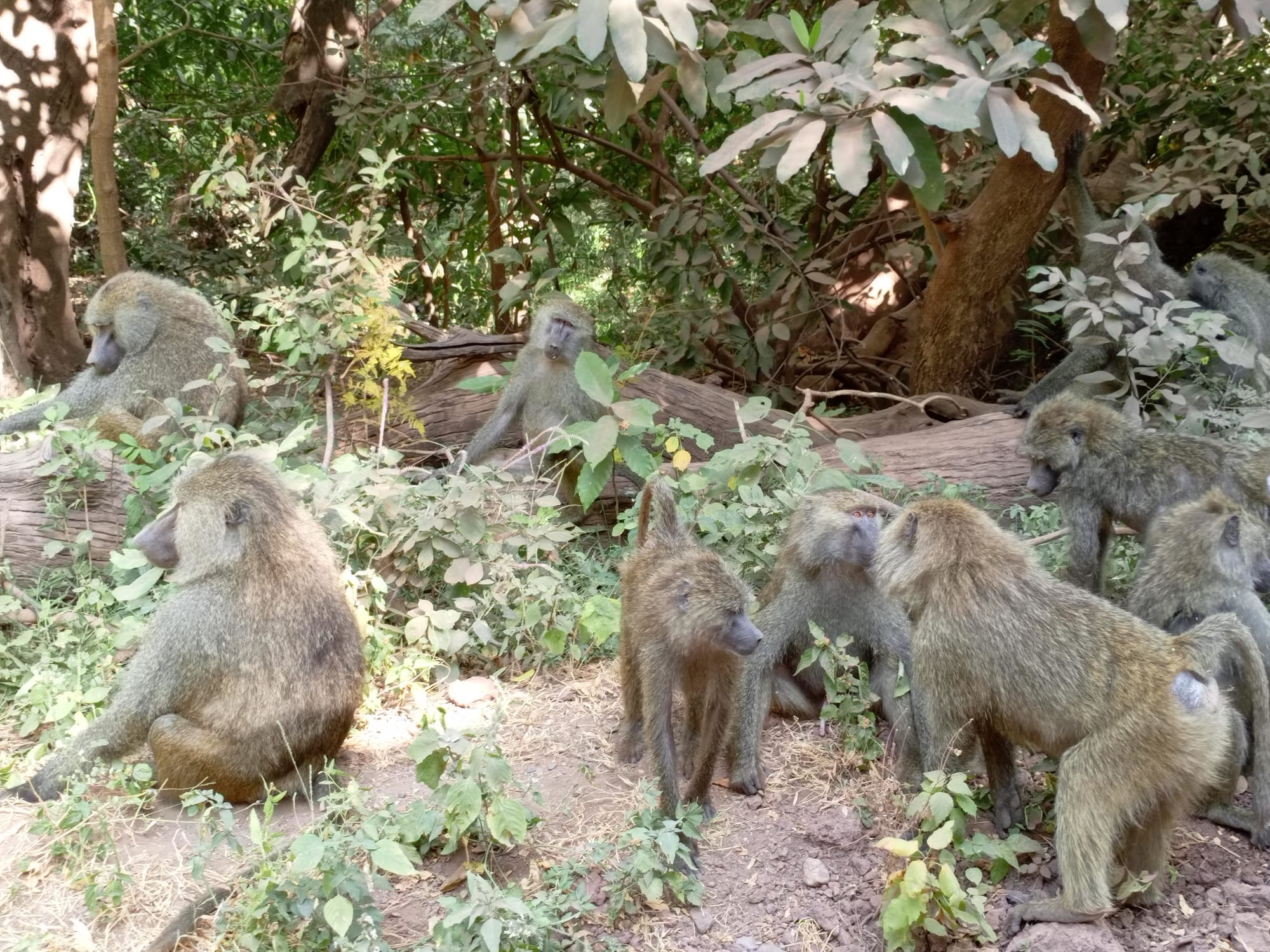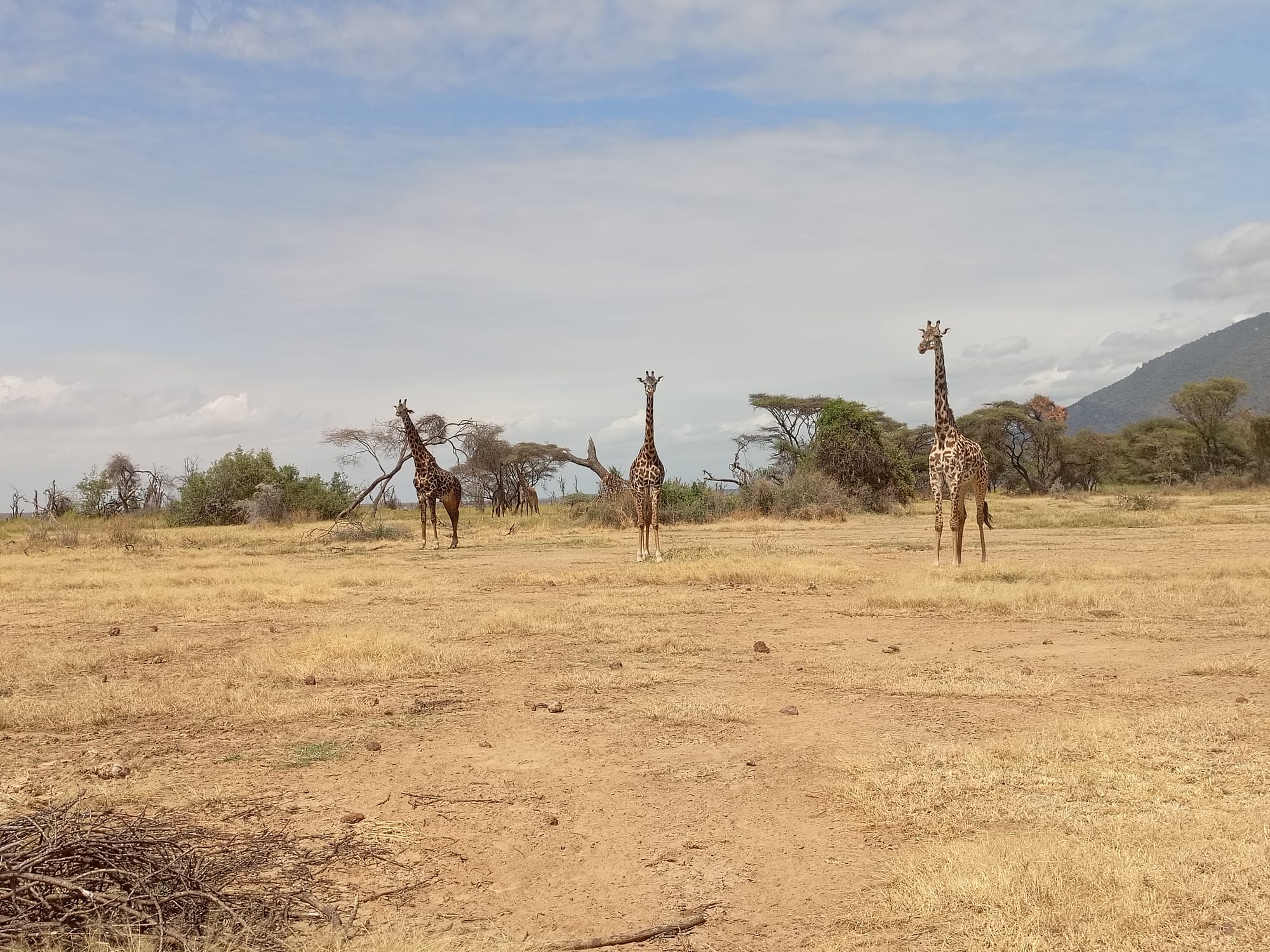LAKE MANYARA NATIONAL PARK
OVER VIEW
Lake Manyara National Park offers a wilderness experience in diverse habitats, from its Rift Valley soda lake to dense woodlands and steep mountainsides. Apart from a spectacular setting, the park is famous for its unusual tree-climbing lions and the vast elephant herds it was established to protect. The shores of the lake, encrusted with pink flamingo, attract more than 400 species of birds, many of them waterfowl or migrants. Large herds of buffalo, cheetah, Masai giraffe and impala roam the lake shores and the forested valley slopes.A Lake Manyara safari is a fascinating experience, as the park also features a ground-water forest, acacia tortilis woodland and hot springs called Maji Moto. Troops of several hundred olive baboon appear alongside Sykes monkey and short-eared galago. Cape clawless otter, Egyptian mongoose, hippo and klipspringer are other park residents. VEGETATIONS An African Baobab in Lake Manyara National ParThe flora of Lake Manyara National Park is diverse, with over 670 flowering plant and fern species documented. Most are widespread species; there are few rare or endemic species.The park has a variety of diverse habitats. Rivers flowing off the escarpment and perennial springs below the rift wall support tall, evergreen groundwater forests dominated by Trichilia roka with Broad-Leaved Croton (Croton macrostachyus), sycamore fig (Ficus sycomorus), quinine tree (Rauvolfia caffra) and forest toad-tree (Tabernaemontana ventricosa). Trees are densest in gorges, along the edge of streams and in areas where springs emerge.Growing at the edge of the groundwater forest are dense stands of yellow fever trees (Acacia xanthophloea) and the palm Phoenix reclinata.The flora of Lake Manyara National Park is diverse, with over 670 flowering plant and fern species documented. Most are widespread species; there are few rare or endemic species.Woodlands on the western shore of the lake dominated by Acacia and Commiphora species are also supported by groundwater. Trees are spaced irregularly; densest in zones of seepage and along drainage channels. The dominant tree, Acacia tortilis, grows to about 10m tall with a flat-topped canopy. There is a patchy and diverse understory shrub layer. MAMMALS Populations of large migratory mammals that are concentrated primarily in Tarangire National Park, but also move through Lake Manyara National Park include wildebeest, zebra, Thomson's gazelle and Grant's gazelle. Large herds of wildebeest and other plains game from the Mto wa Mbu Game Controlled Area enter the park from the north for short periods.Wildebeest exclusively graze the alkaline grasslands around the lake, and numbers are highest during the dry season, dropping to small resident populations in the wet season.Herbivores of Lake Manyara National Park include zebra, bushbuck, waterbuck, Grant's gazelle, impala, Thomson's gazelle, Cape buffalo, giraffe, hippopotamus, baboon, warthog, and elephant.Studies in the 1980s found this to be one of the areas with the highest wildlife biomass in Africa, but elephant numbers had fallen by 75% between 1985 and 1991 as a result of illegal hunting, with numbers rebounding to around 200 in 1996. Lake Manyara was also once known for its high population of black rhinoceros, but none were present by 1996. Similarly, reedbuck were present in 1984, but no individuals were found in a 1996 census. Predators of Lake Manyara National Park include lion, leopard, African wild cat, spotted hyena, black-backed jackal, bat-eared fox, serval, honey badger, African civet, genet (Genetta) species and several mongoose species. Cheetah and African golden cat are sighted occasionally.









